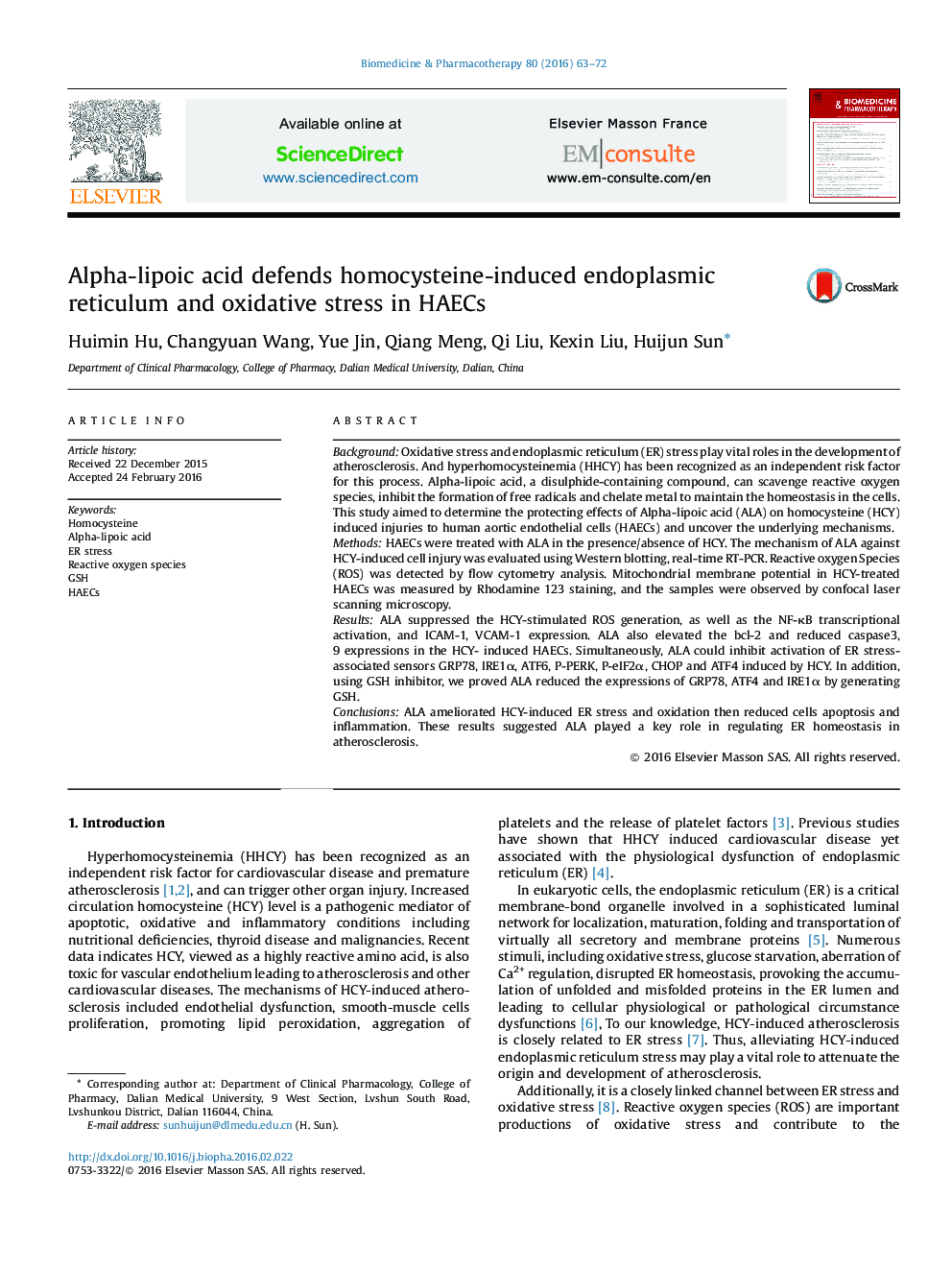| کد مقاله | کد نشریه | سال انتشار | مقاله انگلیسی | نسخه تمام متن |
|---|---|---|---|---|
| 2523734 | 1557962 | 2016 | 10 صفحه PDF | دانلود رایگان |

BackgroundOxidative stress and endoplasmic reticulum (ER) stress play vital roles in the development of atherosclerosis. And hyperhomocysteinemia (HHCY) has been recognized as an independent risk factor for this process. Alpha-lipoic acid, a disulphide-containing compound, can scavenge reactive oxygen species, inhibit the formation of free radicals and chelate metal to maintain the homeostasis in the cells. This study aimed to determine the protecting effects of Alpha-lipoic acid (ALA) on homocysteine (HCY) induced injuries to human aortic endothelial cells (HAECs) and uncover the underlying mechanisms.MethodsHAECs were treated with ALA in the presence/absence of HCY. The mechanism of ALA against HCY-induced cell injury was evaluated using Western blotting, real-time RT-PCR. Reactive oxygen Species (ROS) was detected by flow cytometry analysis. Mitochondrial membrane potential in HCY-treated HAECs was measured by Rhodamine 123 staining, and the samples were observed by confocal laser scanning microscopy.ResultsALA suppressed the HCY-stimulated ROS generation, as well as the NF-κB transcriptional activation, and ICAM-1, VCAM-1 expression. ALA also elevated the bcl-2 and reduced caspase3, 9 expressions in the HCY- induced HAECs. Simultaneously, ALA could inhibit activation of ER stress-associated sensors GRP78, IRE1α, ATF6, P-PERK, P-eIF2α, CHOP and ATF4 induced by HCY. In addition, using GSH inhibitor, we proved ALA reduced the expressions of GRP78, ATF4 and IRE1α by generating GSH.ConclusionsALA ameliorated HCY-induced ER stress and oxidation then reduced cells apoptosis and inflammation. These results suggested ALA played a key role in regulating ER homeostasis in atherosclerosis.
Journal: Biomedicine & Pharmacotherapy - Volume 80, May 2016, Pages 63–72